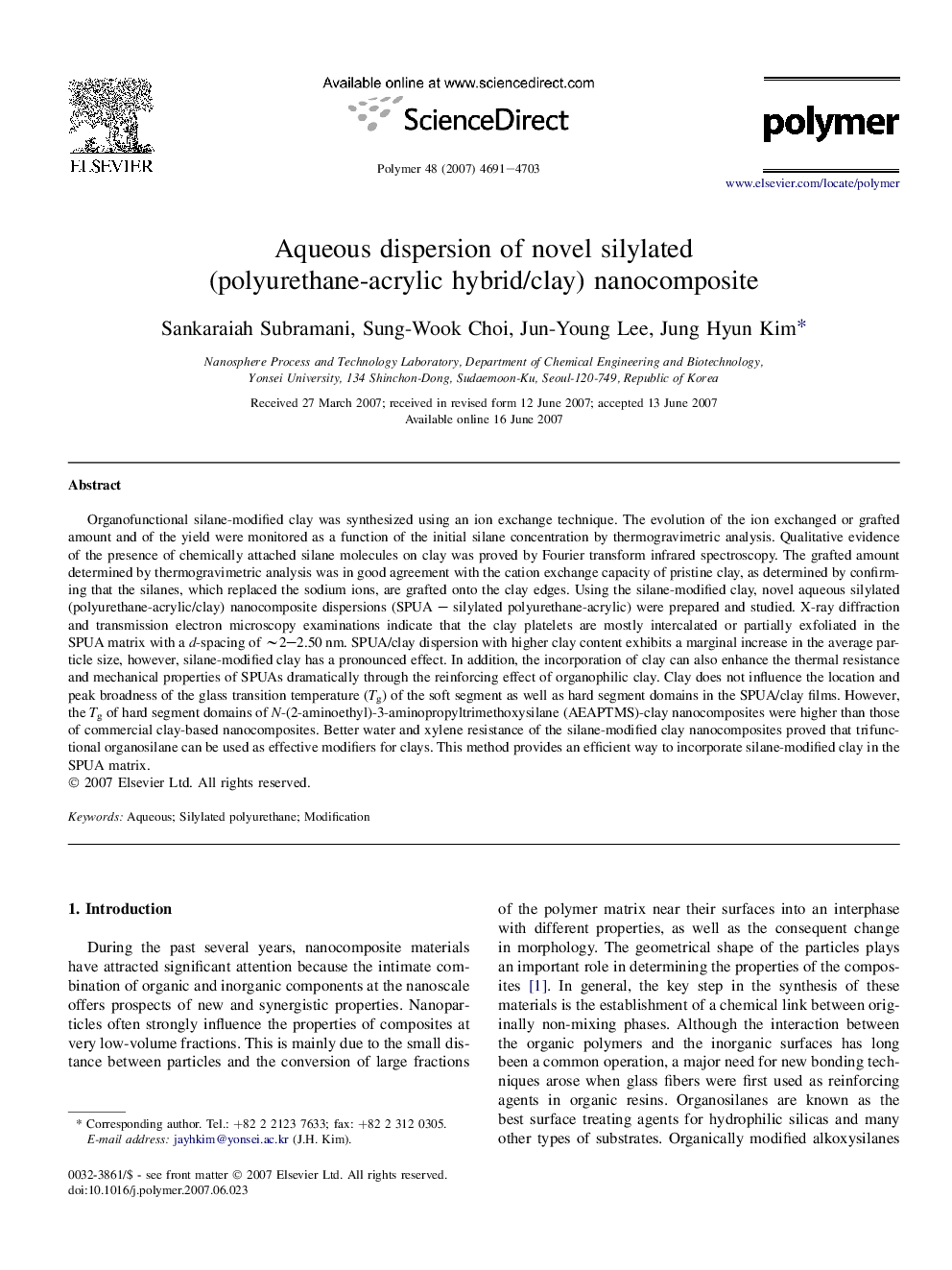| کد مقاله | کد نشریه | سال انتشار | مقاله انگلیسی | نسخه تمام متن |
|---|---|---|---|---|
| 5185763 | 1381087 | 2007 | 13 صفحه PDF | دانلود رایگان |

Organofunctional silane-modified clay was synthesized using an ion exchange technique. The evolution of the ion exchanged or grafted amount and of the yield were monitored as a function of the initial silane concentration by thermogravimetric analysis. Qualitative evidence of the presence of chemically attached silane molecules on clay was proved by Fourier transform infrared spectroscopy. The grafted amount determined by thermogravimetric analysis was in good agreement with the cation exchange capacity of pristine clay, as determined by confirming that the silanes, which replaced the sodium ions, are grafted onto the clay edges. Using the silane-modified clay, novel aqueous silylated (polyurethane-acrylic/clay) nanocomposite dispersions (SPUA - silylated polyurethane-acrylic) were prepared and studied. X-ray diffraction and transmission electron microscopy examinations indicate that the clay platelets are mostly intercalated or partially exfoliated in the SPUA matrix with a d-spacing of â¼2-2.50Â nm. SPUA/clay dispersion with higher clay content exhibits a marginal increase in the average particle size, however, silane-modified clay has a pronounced effect. In addition, the incorporation of clay can also enhance the thermal resistance and mechanical properties of SPUAs dramatically through the reinforcing effect of organophilic clay. Clay does not influence the location and peak broadness of the glass transition temperature (Tg) of the soft segment as well as hard segment domains in the SPUA/clay films. However, the Tg of hard segment domains of N-(2-aminoethyl)-3-aminopropyltrimethoxysilane (AEAPTMS)-clay nanocomposites were higher than those of commercial clay-based nanocomposites. Better water and xylene resistance of the silane-modified clay nanocomposites proved that trifunctional organosilane can be used as effective modifiers for clays. This method provides an efficient way to incorporate silane-modified clay in the SPUA matrix.
Journal: Polymer - Volume 48, Issue 16, 27 July 2007, Pages 4691-4703